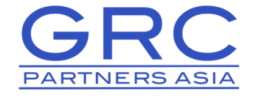Audit, risk, and compliance. Frequently seen as the three pillars of governance, they create a resilient framework to safeguard companies.
Let’s dig deeper:
Auditing involves the evaluation of financial records, controls, and processes to verify accurate and compliant financial statements and deliver transparency to stakeholders. It offers investors and regulators a comprehensive perspective on an organization’s financial well-being.
Risk management involves recognizing, assessing, and mitigating potential threats to a company’s goals, enabling effective resource allocation and informed decision-making through proactive strategies and contingency planning.
Compliance involves adhering to industry regulations and standards, guaranteeing ethical operations within legal confines, and safeguarding stakeholder interests. Compliance cultivates a culture of accountability and integrity by implementing clear policies, training, and vigilant oversight, supporting long-term growth and reputation management.
Audit, Risk, and Compliance: A Seamless Integration
Auditing, risk, and compliance have obvious commonalities but work together to ensure organizational stability and regulatory adherence. Here are a few connect-the-dot examples:
Training and Education
Annual training programs, such as those addressing Conflicts of Interest (COI) and codes of conduct, ensure employees remain aware of their responsibilities.
Tight integration of training programs and real-time situational awareness allows for immediate training, offering employees the information they need as they encounter potential issues, such as if a new business relationship or partnership may pose a problem for a company.
Continuous Monitoring
Ad hoc compliance requirements, such as updating COIs, can be seamlessly incorporated into ongoing risk assessments. This approach ensures potential conflicts are identified and addressed promptly, preventing escalation.
Refresher Trainings
Refresher training can be effortlessly conducted by disseminating information to employees as needed. This approach reinforces compliance protocols and keeps employees engaged in maintaining a compliant workplace.
How Refresher Trainings Benefit Auditors
Keep in mind that internal auditors need refresher training as well in order to keep up to date on current methodologies and standards to ensure assessments meet regulatory requirements. Regularly updating auditors on the latest best practices, industry trends, and changes in regulations ensures they are equipped with the knowledge to conduct thorough and accurate assessments. By staying updated, auditors can identify potential areas of non-compliance and recommend appropriate corrective actions.
Selection of Trainings
Typically, training selections are done by a training or compliance department, ensuring there is no conflict of interest. This means the person doing the audit is not usually the same person selecting training. This separation ensures training content remains unbiased and is chosen based on the organization’s needs and regulatory changes.
Refresher training also is a way to assess emerging risks and potential vulnerabilities.
Regarding compliance, employees who are better equipped to uphold compliance standards are more prepared to mitigate compliance breaches and foster a culture of ethical conduct.
Data Privacy and Security Compliance
Amidst data privacy rules such as General Data Protection Regulation (GDPR) and the Health Insurance Portability and Accountability Act (HIPAA), organizations must know how to manage highly sensitive information. This is where risk management comes into play, as it identifies data security risks and the potential impact of data breaches.
Compliance comes into play in ensuring privacy rules are enforced and safeguards are upheld.
Auditing then ensures security measures are in place, and compliance and risk goals are successfully met.
Final Thoughts
The synergy of audit, risk, and compliance in the compliance industry nurtures an environment where financial transparency, risk mitigation, and ethical conduct come together.
As organizations strive to stay ahead of ever-evolving regulations and market dynamics, this interconnectedness guides them toward operational resilience, regulatory compliance, and sustainable success.
How SAI360 Can Help
Click here to schedule a live demo of SAI360’s GRC platform.
This article was originally published by SAI360.






